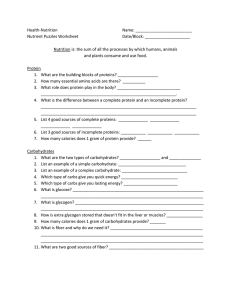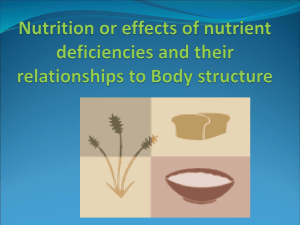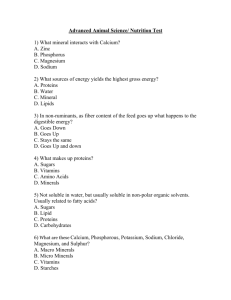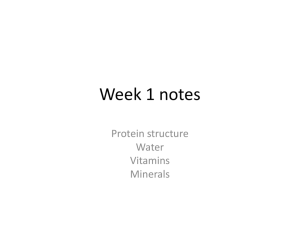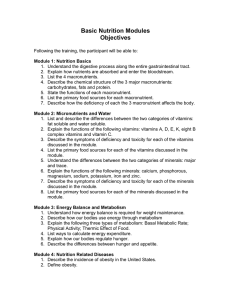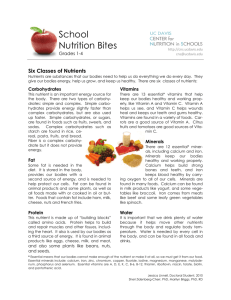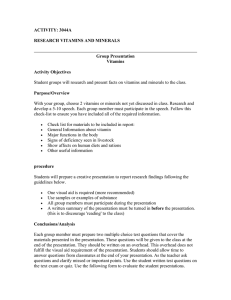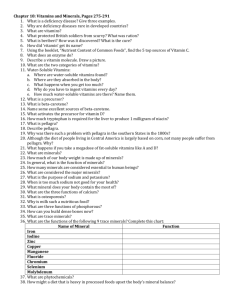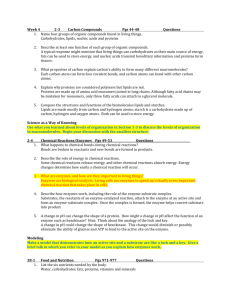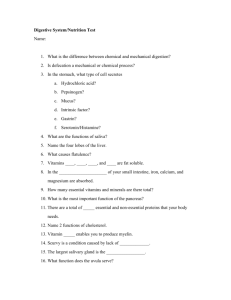Biology 110: Principles of Biology
advertisement
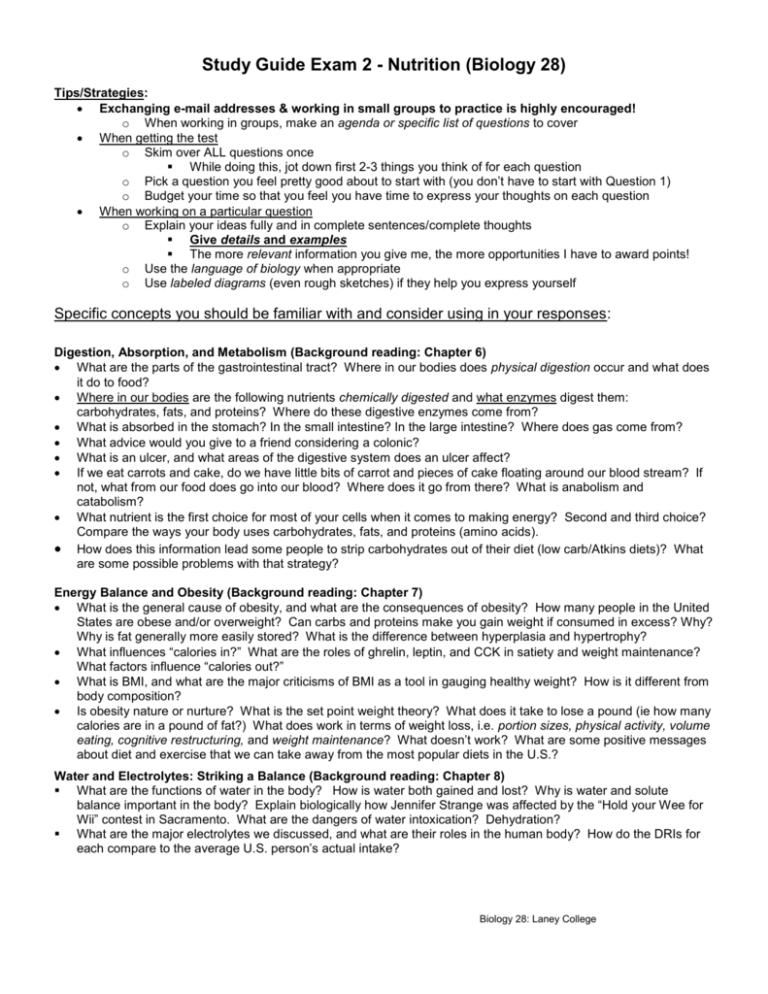
Study Guide Exam 2 - Nutrition (Biology 28) Tips/Strategies: Exchanging e-mail addresses & working in small groups to practice is highly encouraged! o When working in groups, make an agenda or specific list of questions to cover When getting the test o Skim over ALL questions once While doing this, jot down first 2-3 things you think of for each question o Pick a question you feel pretty good about to start with (you don’t have to start with Question 1) o Budget your time so that you feel you have time to express your thoughts on each question When working on a particular question o Explain your ideas fully and in complete sentences/complete thoughts Give details and examples The more relevant information you give me, the more opportunities I have to award points! o Use the language of biology when appropriate o Use labeled diagrams (even rough sketches) if they help you express yourself Specific concepts you should be familiar with and consider using in your responses: Digestion, Absorption, and Metabolism (Background reading: Chapter 6) What are the parts of the gastrointestinal tract? Where in our bodies does physical digestion occur and what does it do to food? Where in our bodies are the following nutrients chemically digested and what enzymes digest them: carbohydrates, fats, and proteins? Where do these digestive enzymes come from? What is absorbed in the stomach? In the small intestine? In the large intestine? Where does gas come from? What advice would you give to a friend considering a colonic? What is an ulcer, and what areas of the digestive system does an ulcer affect? If we eat carrots and cake, do we have little bits of carrot and pieces of cake floating around our blood stream? If not, what from our food does go into our blood? Where does it go from there? What is anabolism and catabolism? What nutrient is the first choice for most of your cells when it comes to making energy? Second and third choice? Compare the ways your body uses carbohydrates, fats, and proteins (amino acids). How does this information lead some people to strip carbohydrates out of their diet (low carb/Atkins diets)? What are some possible problems with that strategy? Energy Balance and Obesity (Background reading: Chapter 7) What is the general cause of obesity, and what are the consequences of obesity? How many people in the United States are obese and/or overweight? Can carbs and proteins make you gain weight if consumed in excess? Why? Why is fat generally more easily stored? What is the difference between hyperplasia and hypertrophy? What influences “calories in?” What are the roles of ghrelin, leptin, and CCK in satiety and weight maintenance? What factors influence “calories out?” What is BMI, and what are the major criticisms of BMI as a tool in gauging healthy weight? How is it different from body composition? Is obesity nature or nurture? What is the set point weight theory? What does it take to lose a pound (ie how many calories are in a pound of fat?) What does work in terms of weight loss, i.e. portion sizes, physical activity, volume eating, cognitive restructuring, and weight maintenance? What doesn’t work? What are some positive messages about diet and exercise that we can take away from the most popular diets in the U.S.? Water and Electrolytes: Striking a Balance (Background reading: Chapter 8) What are the functions of water in the body? How is water both gained and lost? Why is water and solute balance important in the body? Explain biologically how Jennifer Strange was affected by the “Hold your Wee for Wii” contest in Sacramento. What are the dangers of water intoxication? Dehydration? What are the major electrolytes we discussed, and what are their roles in the human body? How do the DRIs for each compare to the average U.S. person’s actual intake? Biology 28: Laney College Vitamins and Minerals (Background reading: Chapter 9 (in Laney Edition) or 9 and 10 in other editions) What exactly is a vitamin? A mineral? Are macro- or micronutrients stored in smaller amounts in the body? Do vitamins and minerals provide energy? What’s the difference and significance between water- and fat-soluble vitamins? What are provitamins? What are signs of a Vitamin A deficiency? What about toxicity? How do Vitamin A levels affect eye health? How can you minimize loss of vitamins and minerals when cooking your food? Who is most affected by osteoporosis, and why? Describe the balance of resorption and ossification in patients with osteoporosis, addressing the roles of osteoblasts, osteoclasts, hormones, AND key vitamins and minerals. What foods and practices would you recommend to someone who has osteoporosis or is trying to prevent it? Nutritional Supplements (Background reading: Chapter 11) What is a supplement, and generally, do they work? Use an example or two to support your answer. Who might be a good candidate for a supplement, and why? How does the FDA monitor the safety of supplements? Alcohol: The Good, the Bad, the Fermented (Background reading: Chapter 12) Is alcohol a nutrient? How is alcohol digested and metabolized in the body? What enzymes are involved? How does this process compare for women versus men, Asians and Native Americans? How does alcohol affect the liver? The brain? Why does alcohol lower your inhibition? What health risks are associated with heavy/binge drinking? 2 Biology 28 Laney College

